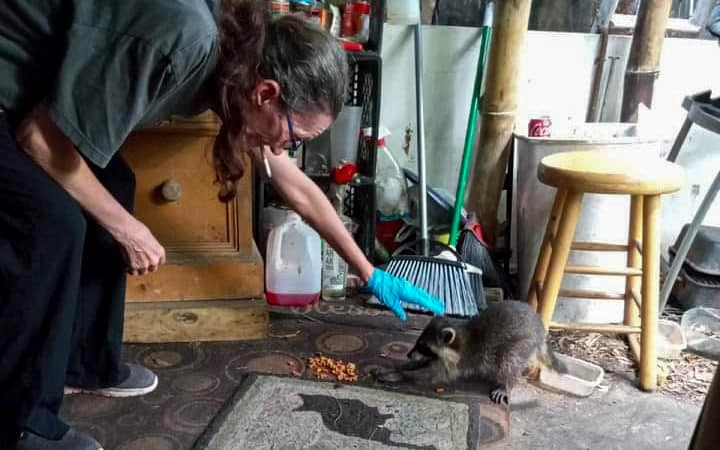Even after $1.5 billion and over 30 years, there were
1.5 million students homeless during the 2017-2018 school year, all seeing a dramatic drop in academic standing
By Katie Aulenbacher
The recorded number of unhoused public school students in the United States has almost doubled over the past decade, and Florida is among the hardest hit states, according to the U.S. Department of Education.
McKinney-Vento categorizes students “who lack a fixed, regular, and adequate nighttime residence” as homeless.
This includes children living in public spaces, abandoned buildings, bus stations, cars, campgrounds, parks, shelters, substandard housing, motels, hotels, and doubled up with other families.
Schools are straining to meet the needs of unhoused students and to manage this crisis they are neither designed nor equipped to handle. The McKinney-Vento Act — a federal law passed in 1987, continuously renewed and meant to help protect students experiencing homelessness — is struggling to deliver on its guarantees, with its educational initiatives having cost taxpayers more than $1.5 billion since it began. Reliable evaluations of its impact are scarce though, and unhoused students’ academic proficiency continues to fall.
Student homelessness increased 90% since 2007-2008, bringing the 2017-2018 total to over 1.5 million.
The number of unhoused students with limited English proficiency increased by more than 300%, from 62,000 to 261,000, while students living without any shelter increased by over 100%, from 50,000 to 102,000.
From the 2007-2008 to 2017-2018 school years, Florida faced one of the most dramatic increases in unhoused students with a surge from 34,000 to 95,000. Official counts for the 2018-2019 school year are pending, but the Florida Department of Education anticipates a 10% upsurge over the previous year in Broward County Public Schools.
While some percentage of the increase could be from improved record keeping, the number could still be higher still as it only reflects students public officials were able to identify during the academic year. This means the number excludes students experiencing homelessness during the summer, those not enrolled in a record-keeping school, and those not identified by officials as homeless, all of which adds to McKinney-Vento’s struggles.
Debra Albo-Steiger, the Director of Outreach for Project UP-START — the organization that oversees the implementation of McKinney-Vento in Miami-Dade — estimated that the county currently has 5,000 unidentified unhoused students.
McKinney-Vento’s implementation, and therefore its ability to deliver on its purpose, is made significantly more difficult by this obstacle of identifying unhoused students. Contributing to this obstacle is the possible fear of being identified and where that information goes.
Albo-Steiger categorizes Miami-Dade’s “hidden” or uncounted homeless into three main groups: undocumented families who do not seek services from a fear of deportation, families who don’t self-identify from fear of being reported to the Florida Department of Children and Families (DCF), and families who don’t seek help out of a sense of pride or honor. Each of these groups believe they have something to lose from being identified and so add into those hidden numbers and gain nothing from McKinney-Vento.
Albo-Steiger explains that Project UP-START’s services do not handle social security numbers or coordinate with immigration authorities, and in general do not need to contact DCF.
Besides homeless families,unaccompanied and unhoused youth are also particularly vulnerable to not being counted. The majority of a group surveyed in a 2015 Youth and Society study of unaccompanied and unhoused youth did not disclose their housing status. The students “feared staff would not keep their living status confidential and valued protecting themselves from stigmatization by their peers over any advantage the McK-V Act potentially could provide them.” The study referenced additional research confirming that the McKinney-Vento Act “as it exists currently does not adequately meet the needs of unaccompanied youth.”
Yousuf Marvi is one of countless teachers striving to meet those needs. Marvi teaches 7th grade math in Los Angeles, California and has had “many, many students suffer from inconsistent housing. Moving again and again, living with multiple family members, [and enduring a] lack of personal space.”
Unhoused students score significantly lower on language arts, science, and math exams according to a 2017 Shimberg Center for Housing Studies and Miami Homes for All study.
He says that students with unstable housing experience tremendous stress, the consequences of which compound over time and stunt academic progress, having seen students exhibit anxiety, depression, anger, and an inability to focus. This is not solely his opinion either.
According to the National Coalition for the Homeless, homelessness is linked to substandard educational outcomes, and unhoused students transfer schools more frequently than those who are housed, where each move could amount to a loss of 3-6 months of education. A 1998 Consortium on Chicago School Research, 1999 Policy Analysis for California Education, 2001 National Bureau of Economic Research, and 2003 Journal of Negro Education study all found that mobility adversely impacts the academic performance of non-mobile students as well.
Florida’s Council on Homelessness and The American Academy of Pediatrics both explain that this loss of housing impacts students and greatly, from routines, relationships, security, attention, and emotional energy, to being more prone to psychosocial development issues, malnutrition, and chronic disease. The National Health Care for the Homeless Council reports that homelessness typically exacerbates existing medical conditions and leads to new infections and injuries too.
Unhoused students also face an increased risk of experiencing physical, sexual, and mental violence. The nonprofit SchoolHouse Connection reports that unhoused students are seven times more likely to attempt suicide than their housed peers, with 37% of unhoused high school students having disclosed suicide attempts.
Nancy Padden Venuta is a kindergarten teacher in Madison, Wisconsin who has also taught a significant number of homeless and previously homeless students. Her school last year took on approximately fifty previously unhoused students at once due to construction of a new housing development nearby.
“The whole school was in an uproar with aggressive, angry behavior, abusive language, physical fights, kids leaving class, running through the halls,” she said. “Other students seemed fearful, insecure, and exhibited self-destructive behavior in their new environment. We had our work cut out for us.”
She recalled one kindergartener who was struggling because all her belongings remained at the house her family was evicted from. Her new living quarters were sparse, they even lacked lighting, so Padden Venuta and a group of concerned parents gathered toys, sleeping bags, colorful bins, and a camping light for the girl. A week later, the girl moved on somewhere else.
Another five year old boy at Padden Venuta’s school lived at the YWCA with his mother, who had to work nights. Padden Venuta said that the child “would draw pictures of himself lying in bed with big tears streaming down his face because he was scared at night. He wasn’t supposed to tell anyone because they might get kicked out of the YWCA.”
She explained that these students’ academic, cognitive, social, emotional, and physical health are all being negatively impacted, “Often children are extremely tired since families may be doubled up in a small apartment with no separate space for young children to sleep. Children are often hungry…behavior is an issue as many of these children have suffered some kind of trauma, have not had a chance to become part of a school or neighborhood community, and are not ready for any kind of academic learning.”
Unhoused students are 20% less likely to graduate high school than their housed peers; students who final to obtain a diploma or GED are more likely to become homeless later in life, perpetuating the cycle. This is according to 2019 National Center for Homeless Education and Chapin Hall reports.
The McKinney-Vento Act’s Education for Homeless Children and Youth Program, most recently reauthorized by Title IX, Part A of the Every Student Succeeds Act, is the primary policy protecting the rights of these unhoused students. It requires local education agencies to identify unhoused students and provide them with a “full and equal opportunity to succeed” in school. Doing so entails removing obstacles to, and providing necessary support for, enrollment, attendance, and academic performance.
Funding for its education program has increased from $4.6 million in 1987 to $93.5 million in 2019, but, despite spending a total of over $1.5 billion taxpayer dollars, the program has undergone few evaluations or efficacy assessments. A 2001 Children & Schools article reported that studies of the law made “no attempts” to assess the impact of McKinney-funded activities. Barbara Duffield, Executive Director of SchoolHouse Connection, identified the most recent program evaluation as a 2014 Government Accountability Office study, which concluded that the program lacked sufficient oversight.
Duffield warned in Education Week in 2016 that in order for the legislation to translate into meaningful change, accurate measurements of student progress were needed. The Director of Education at Third Way, a public policy think-tank that has performed extensive research on the No Child Left Behind Act — which reauthorized McKinney-Vento in 2001 — shared that she is unaware of any current efforts to assess McKinney-Vento’s efficacy.
What little data is available paints an unfavorable picture of the law’s educational impact. After again finding that “no evaluations of [McKinney-Vento’s] academic effectiveness have been reported,” a 2012 Children & Schools study also showed that McKinney-Vento grants did not improve the educational outcomes of unhoused students. Similarly, a 2018 Miami-Dade study reported that McKinney-Vento funded tutoring services had no impact on students’ academic performance either.
There is evidence, however, that McKinney-Vento has improved unhoused students’ attendance rates by removing bureaucratic obstacles to enrollment. Prior to the law’s enactment, unhoused students could be denied entry due to missing residency, guardianship, or vaccination records for example.
Department of Education data shows that 45% of unhoused students in grades 3-8 were proficient in reading in the 2007-2008 school year, while only 28% were proficient in the 2017-2018 school year. Reported math proficiency dropped from 45% to 24%.
A criticism of the act, besides its lack of measurable academic success, is that it can hold educational organizations to an implausible standard.
A Department of Education document outlining the act’s mandates explains, “The McKinney-Vento Act requires that all homeless children be given the opportunity to achieve to challenging State academic standards,” and unhoused students must have “full and equal opportunity to succeed” in school.
For unhoused students to have this equal educational opportunity, it would in turn require they have the same psychological, medical, emotional, nutritional, and academic support as housed students — but Marvi and Padden Venuta’s experiences, and countless academic studies, show this is not an easy task.
It is unclear how schools and McKinney-Vento liaisons, who are the required persons appointed to every local educational agency — typically local boards of education — who oversee coordination of McKinney-Vento services, could facilitate these supports, typically furnished by a stable family structure.
The liaisons responsible for enacting the law are often presented with complex implementation questions and limited resources, as explained by SchoolHouse Connection: “Oftentimes, local liaisons find that their days are filled with situations that require immediate attention, leaving new local liaisons feeling overwhelmed by the volume and complexity of issues to be addressed. Issues may include complicated eligibility determinations, school selection decisions, cross program coordination, and compliance issues.”
SchoolHouse Connection lists on their website over 300 unique questions that they have received about serving unhoused students, one being, “I have a 17-year-old student who was adopted and lived in another district. The student decided that she no longer wanted to live with the adoptive family. She moved out without their consent and is now living with her biological mother in my district. The school is concerned about registering the student and who would be listed as the legal guardian. Is the student an unaccompanied homeless youth?”
The National Association for the Education of Homeless Children and Youth and the National Law Center on Homelessness & Poverty emphasize that McKinney-Vento issues must be resolved on a case by case basis. The number of published guidelines on disputes over the law’s implementation shows that disputes about who is owed what services are common, another indication of the law’s complexity. In fact, lawsuits have been filed in Washington D.C., Maryland, Delaware, New Hampshire, Pennsylvania, New York, Illinois, Louisiana, and Hawaii.
Regarding the school’s role in determining who is unhoused and who needs what services, Marvi mentions feeling privileged when students choose to disclose their struggles at home. Otherwise, he commented, “We just have to figure it out on our own…we’re just doing a poor guessing game; there’s no real partnerships with outside organizations.” A 2009 brief on Homelessness in NYC Elementary Schools echoed Marvi’s experience, observing that “Schools with high concentrations of needy students can easily become over-extended.”
Padden Venuta went on to describe the impact of working with unhoused students on teachers, saying, “Low academic skills are often exhibited, so extra time and support are needed there…With all the extra attention needed because of behavior, social problems with peers, and academic challenges, it’s very difficult for one teacher to address everyone else’s needs as well. I always feel like I am failing my students. It is overwhelming and discouraging.”
Albo-Steiger acknowledged the limitations of McKinney-Vento as well, commenting that Project UP-START has no control over root causes of homelessness. She credits Project UP-START’s successes to community-wide support, as the organization relies on partnerships with local groups and donations from private individuals in addition to federal funding.
A desire of Padden Venuta’s was for more collaboration with assistants, interventionists, tutors, social workers, and psychologists in addition to those who can provide after school support, food, school supplies, and clothing. Currently, teachers at her school typically pay for special supplies like headphones, snacks, and field trip funds.
Speaking similarly, Marvi concluded, “Schools cannot also be social service centers. They’re primarily a learning institution. I mean, you cannot—there’s a lot of useful ideas, cute ideas about making laundry machines, or washing machines. That’s great, and maybe that’s what’s needed, but that’s not the purpose and the mission of a school. So you are diluting the amount of energy, the resources that a school has in terms of both human and capital.”



